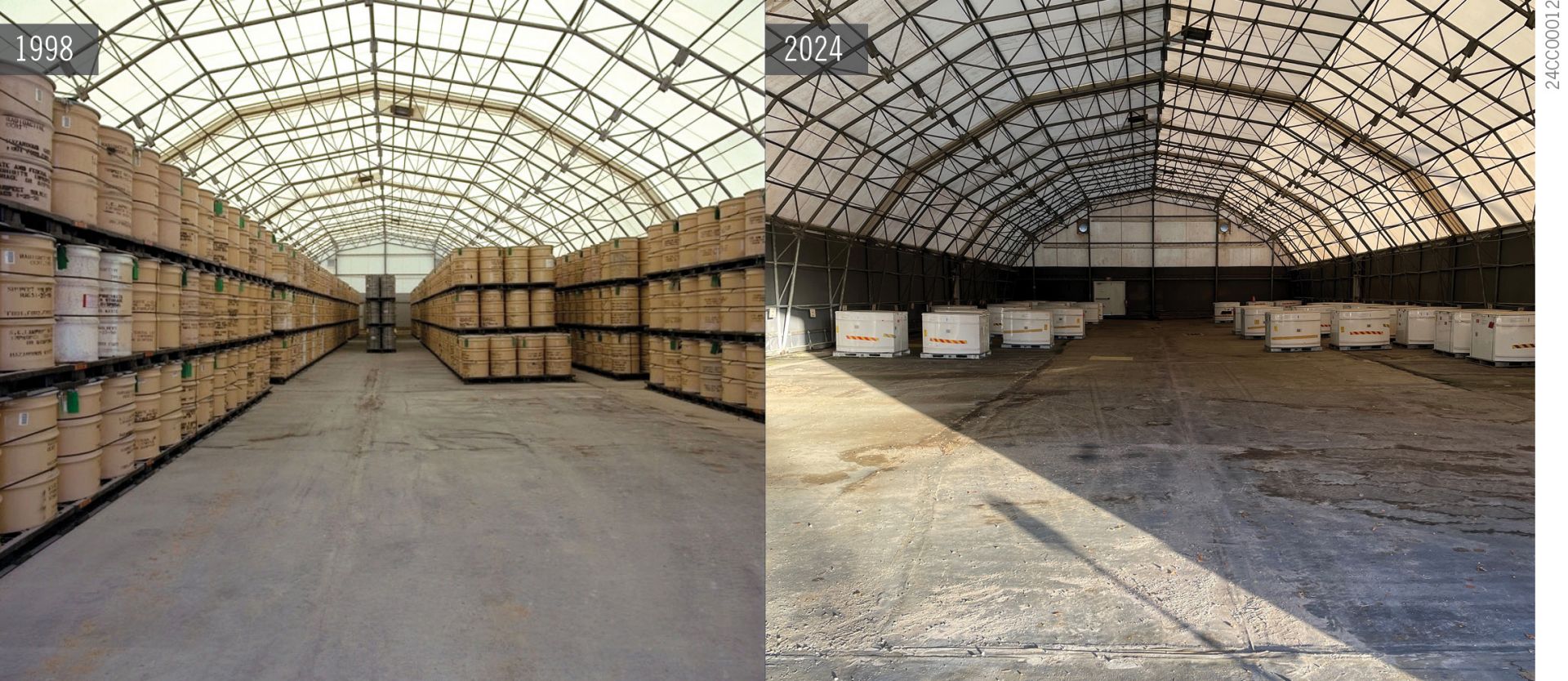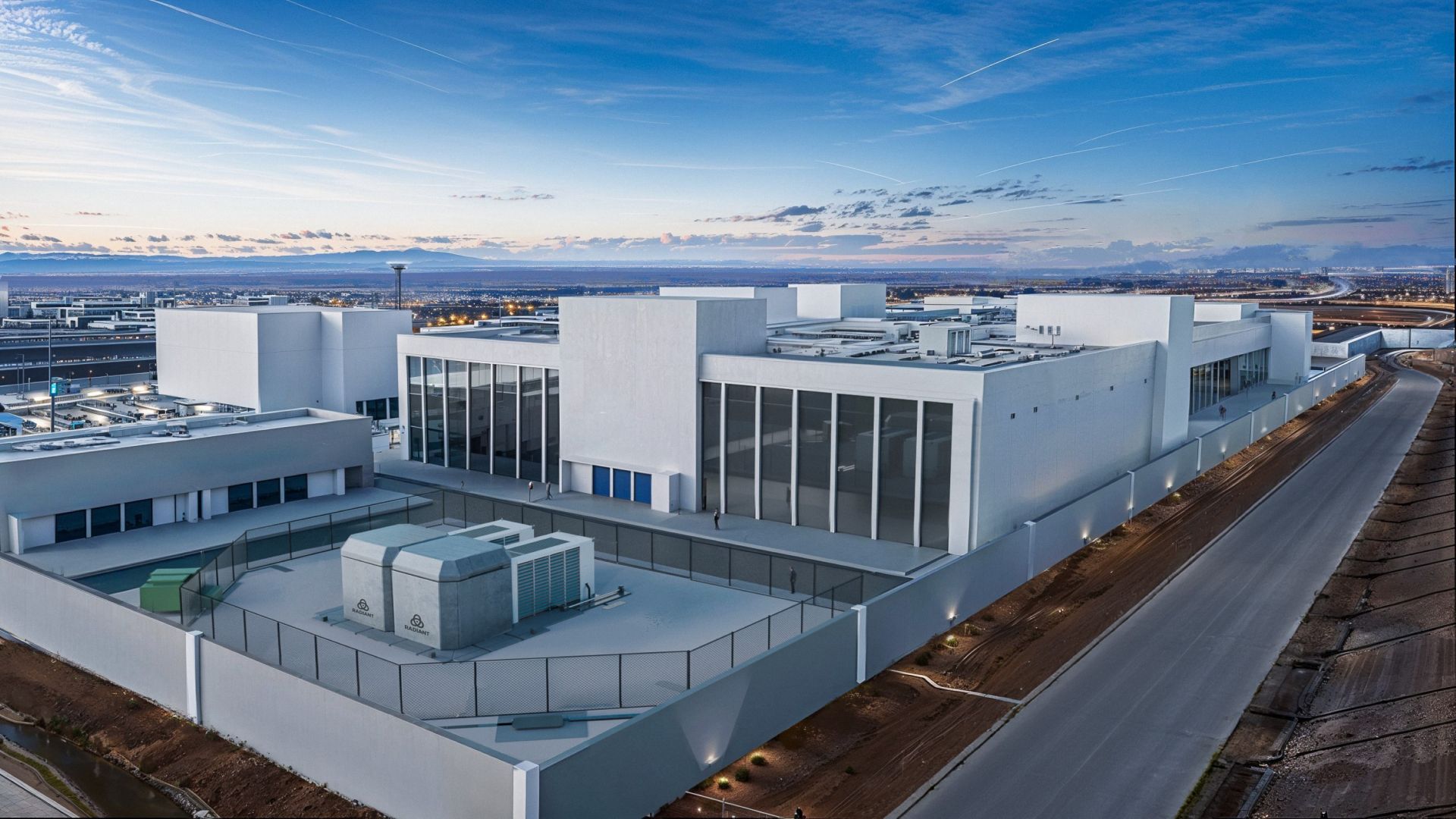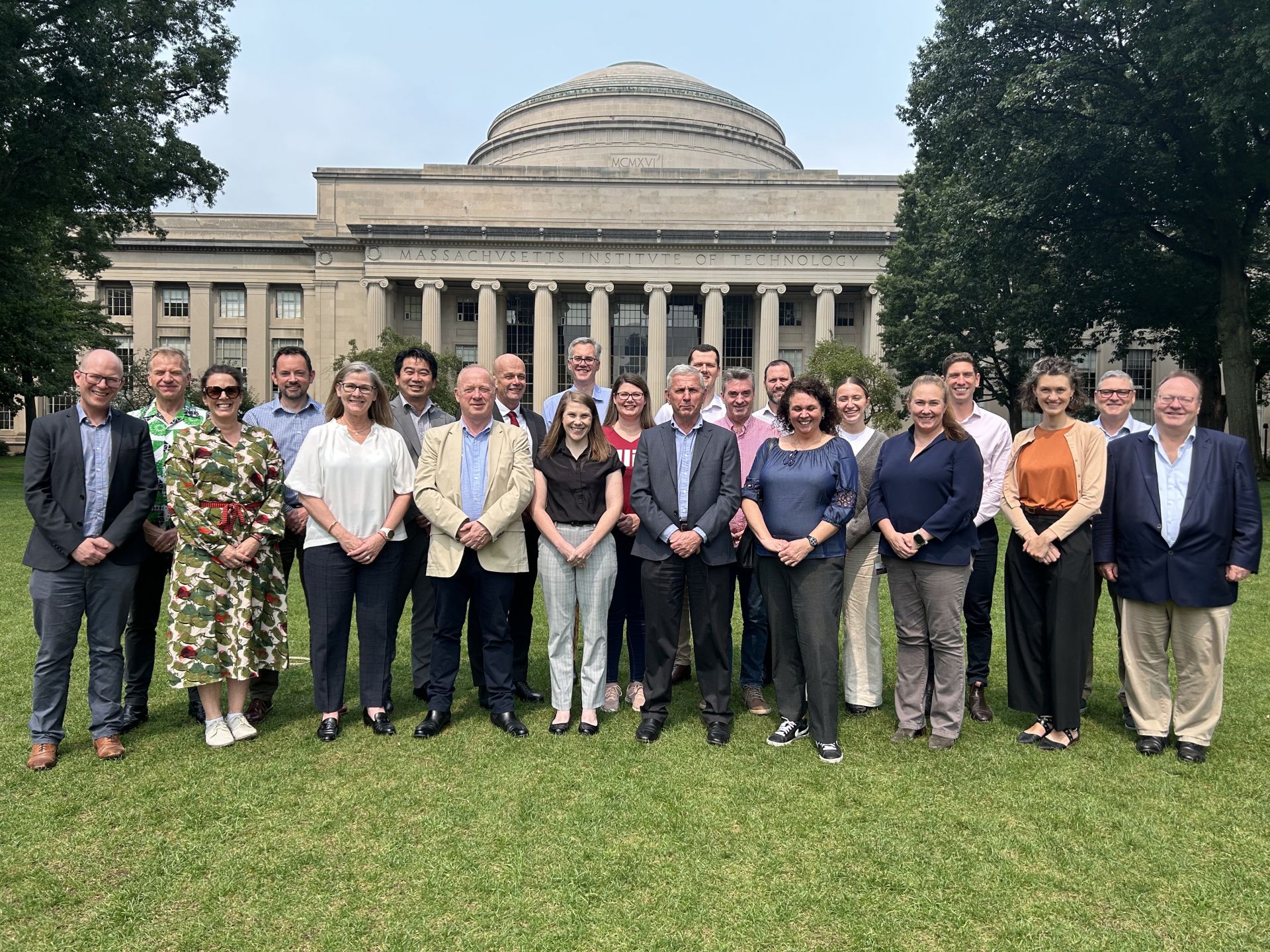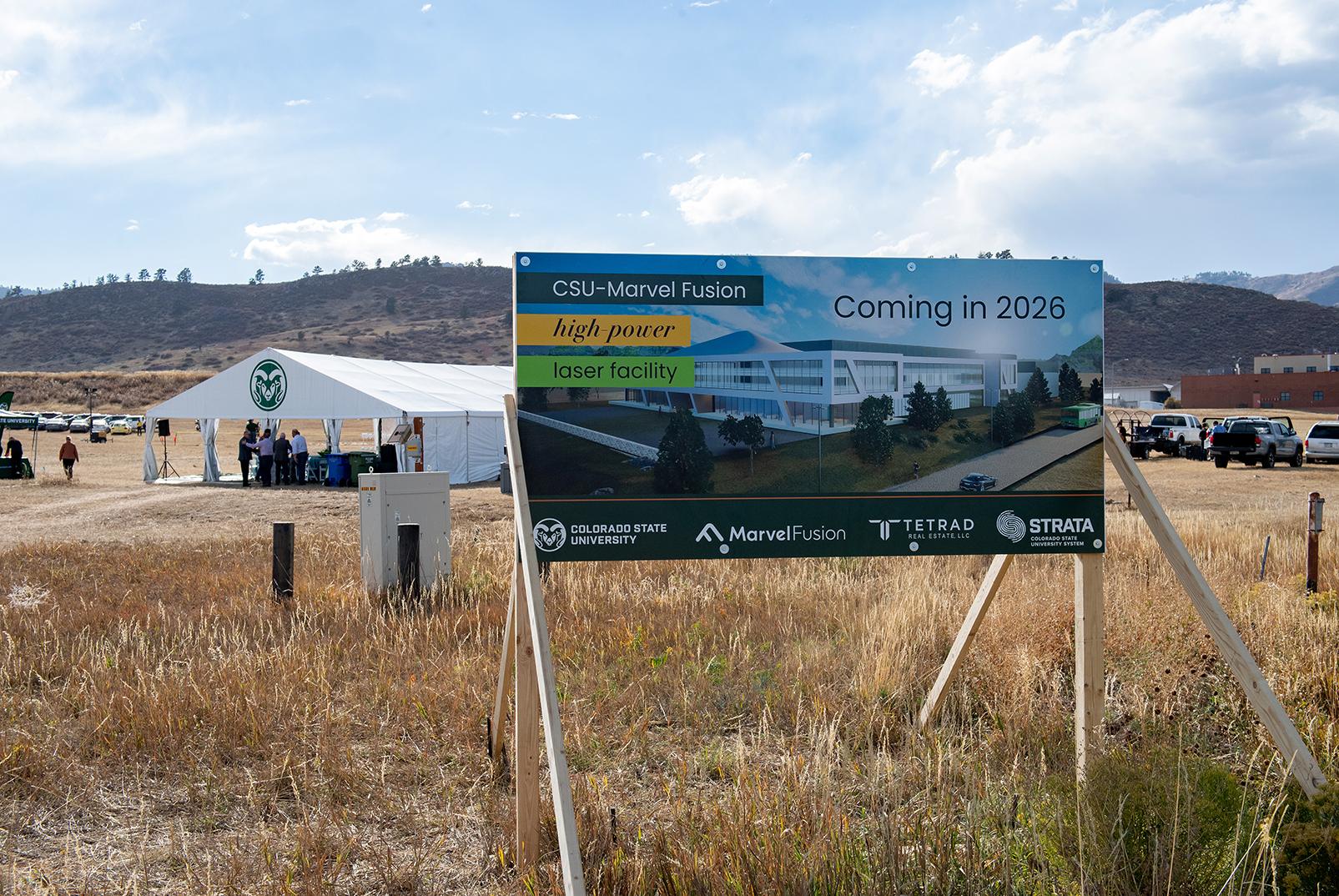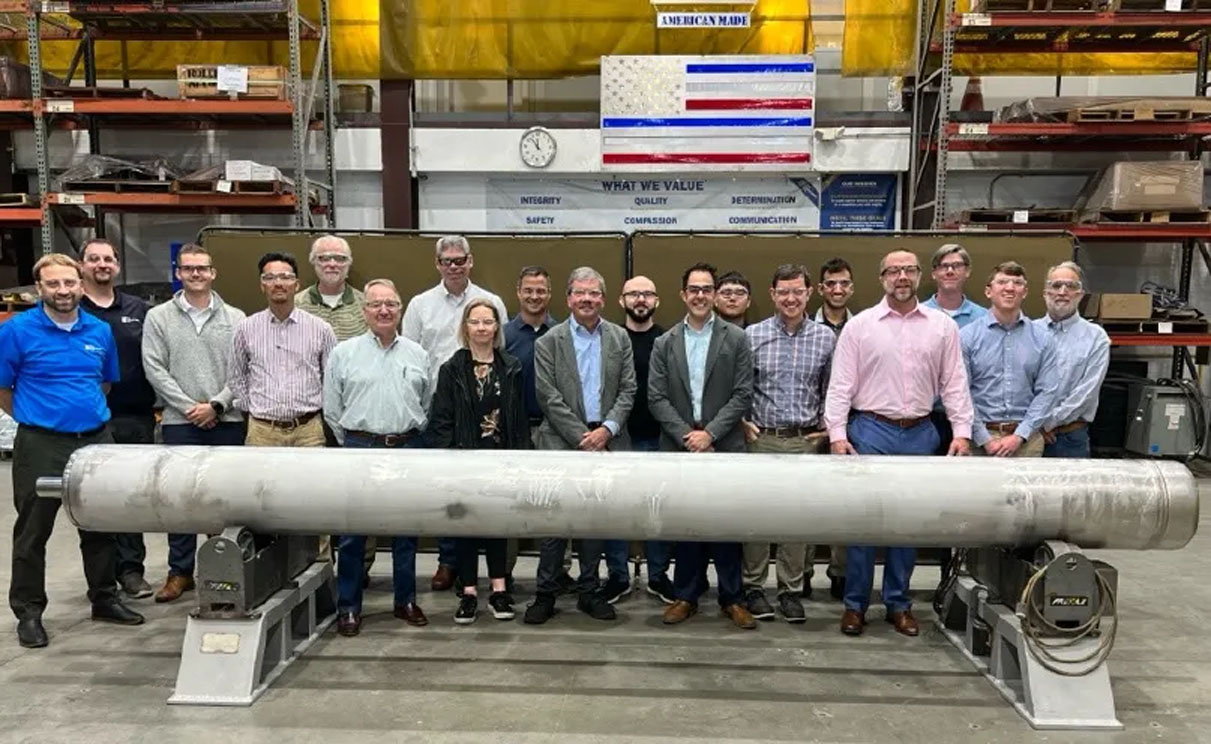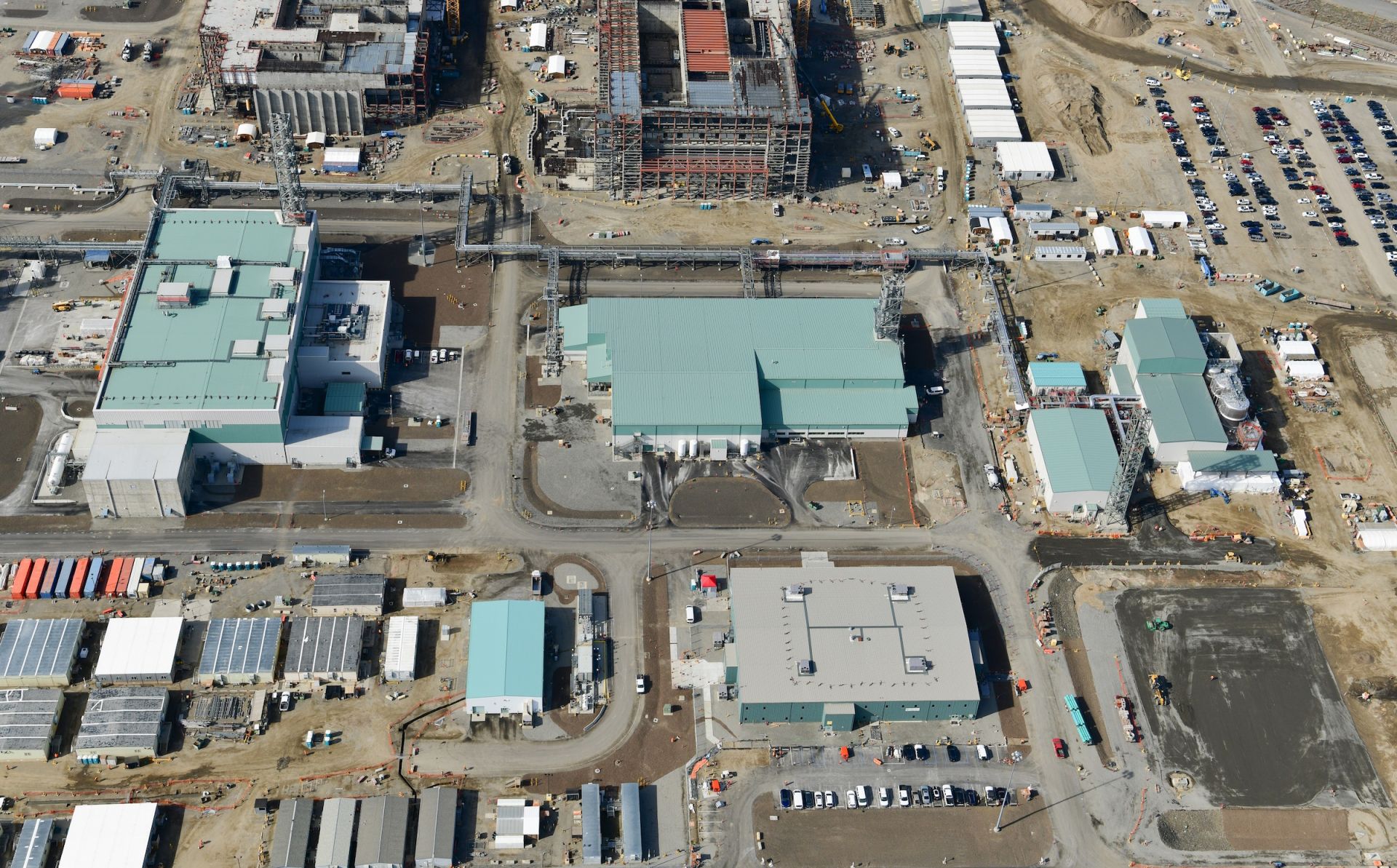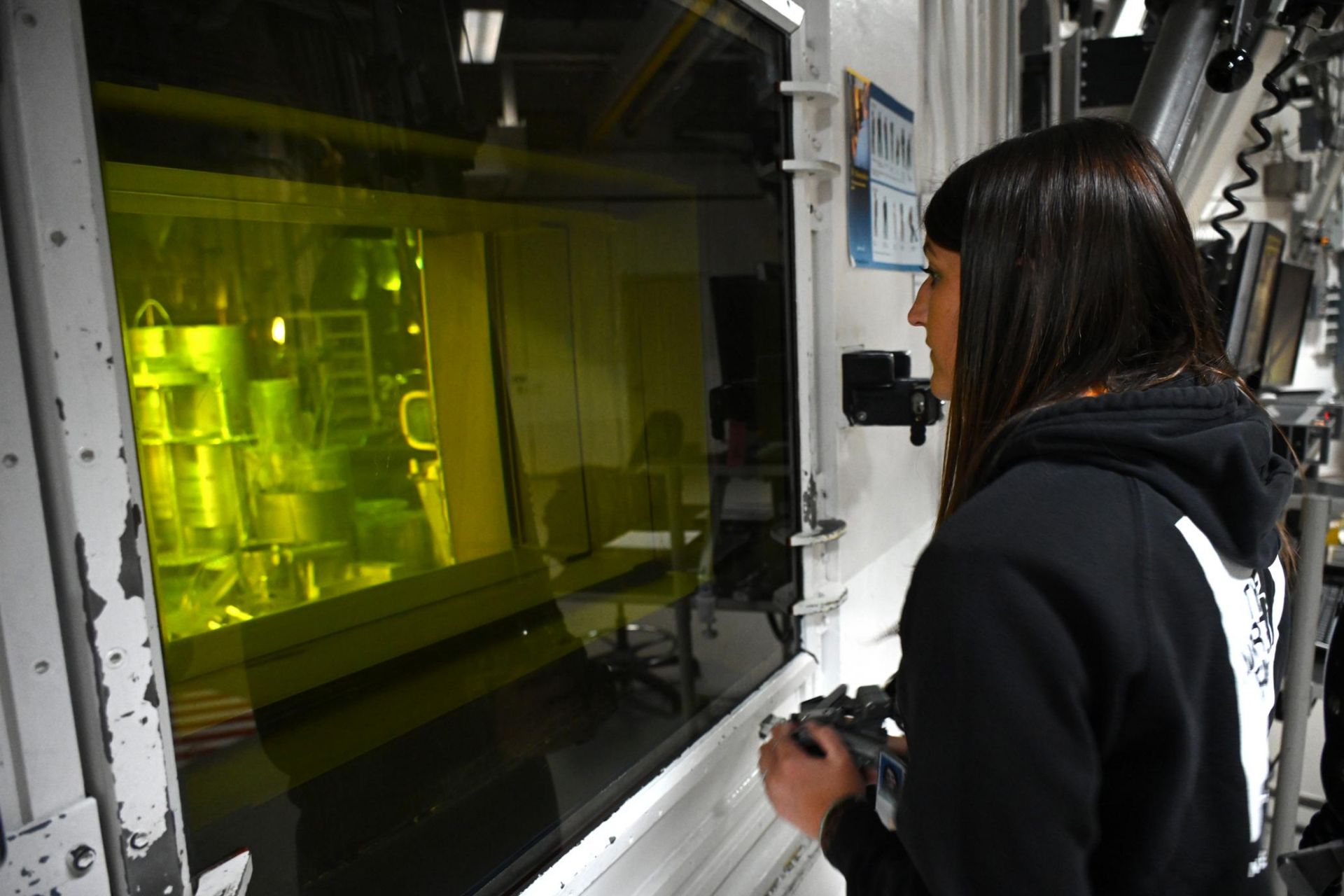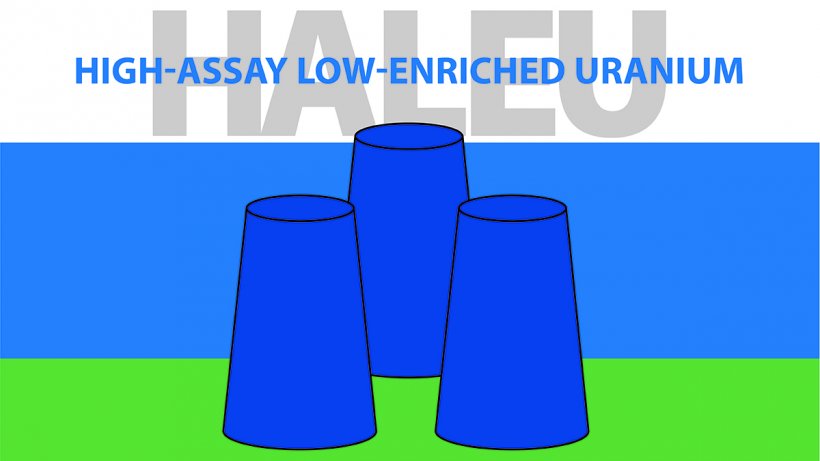TRU drum storage in the Solid Waste Management Facility in 1998 before WIPP opened (left) and in 2024 (right). (Photo: DOE)
The Solid Waste Management Facility (SWMF) at the Savannah River Site saw a large reduction of transuranic (TRU) waste in fiscal year 2024, achieving the highest volume of TRU waste shipped out of state by the facility in the past 10 years, according to the Department of Energy.
TRU waste typically consists of protective clothing, tools, rags, equipment, and miscellaneous items contaminated with small amounts of plutonium and other heavy elements.
A rendering of a data center powered by Radiant's Kaleidos microreactors (shown in the foreground). (Image: Ryan Seper)
Radiant Industries has announced a $100 million Series C funding round to be used primarily to complete its Kaleidos Development Unit (KDU) microreactor for testing in Idaho National Laboratory's Demonstration of Microreactor Experiments (DOME) facility within two years.
The ASA Nuclear Technology for Marine Propulsion class of 2024 poses at MIT. (All photos: MIT Department of Nuclear Science and Engineering)
Some 30 nuclear engineering departments at universities across the United States graduate more than 900 students every year. These young men and women are the present and future of the domestic nuclear industry as it seeks to develop and deploy advanced nuclear energy technologies, grow its footprint on the power grid, and penetrate new markets while continuing to run the existing fleet of reactors reliably and economically.
A technician prepares salts for use in MSRE in 1964. (Photo: ORNL)
FLiBe—a mixture of lithium fluoride and beryllium fluoride—is not an off-the-shelf commodity. The Department of Energy suspects that researchers and reactor developers may have a use for the 2,000 kilograms of fluoride-based salt that once ran through the secondary coolant loop of the Molten Salt Reactor Experiment (MSRE) at Oak Ridge National Laboratory.
Colorado State University hosted a ground-breaking event for a new laser research facility being built in partnership with Marvel Fusion at the university’s Foothills Campus. (Image: CSU)
In the foothills of the Rocky Mountains on the outskirts of Fort Collins, Colo.—home to Colorado State University—work began this month on a new laser facility funded by a public-private partnership. The private portion is $150 million from Marvel Fusion, announced in August 2023, while $12.5 million—the latest funding for CSU from the Department of Energy’s Office of Fusion Energy Sciences (FES)—will support the new facility as part of LaserNetUS, a laser research network operated by DOE-FES to provide access to laser facilities for multidisciplinary researchers from the United States and abroad.
Members of the UPWARDS technical advisory committee stand in front of a prototype universal canister system. (Photo: Deep Isolation)
Deep Isolation announced that it hosted its third technical workshop for the UPWARDS project, a Department of Energy Advanced Research Projects Agency-Energy (ARPA-E) initiative aimed at developing a universal canister system (UCS) for the disposal of radioactive waste streams from advanced reactors. The workshop, held at R-V Industries in Honey Brook, Pa., focused on the large-scale manufacturing and commercialization of the UCS.
Hanford’s Waste Treatment and Immobilization Plant, also known as the Vit Plant. (Photo: Bechtel National)
BWX Technologies announced that the Department of Energy has approved Hanford Tank Waste Operations & Closure (H2C) to begin work under a contract valued at up to $45 billion to clean up tank waste at the Hanford Site near Richland, Wash. H2C is a limited liability company made up of BWXT Technical Services Group, Amentum Environment and Energy, and Fluor Federal Services.
The S5G prototype, which was constructed to simulate submarine operations and could mimic ocean-like conditions, is positioned inside a subgrade basin. (Photo: IEC)
The Department of Energy is proposing to fully decommission the Submarine 5th Generation General Electric (S5G) prototype at the Naval Reactors Facility on the Idaho National Laboratory site. Along with the Environmental Protection Agency and the state of Idaho, the DOE has initiated a 30-day public comment period (ending November 14) on the planned end state for the facility and its defueled reactor vessel.
At Amazon facilities in Virginia, Energy Secretary Jennifer Granholm celebrated support for new reactor deployments and announced that the DOE was accepting applications for SMR deployment funding. (Still shot from a video hosted on YouTube by The Climate Pledge)
Yesterday morning as Amazon, X-energy, Energy Northwest, and Dominion Energy were sharing a spotlight celebrating their investment in X-energy’s high-temperature gas-cooled reactor technology, the Department of Energy opened up the application process for up to $900 million in cost-shared funding to support the initial domestic deployment of a different type of reactor—light water reactors generating about 300 MWe that the DOE calls Gen III+ small modular reactors.
At INL's Fuel Conditioning Facility, spent nuclear fuel material is being recycled into fuel for Oklo's commercial Aurora Powerhouse deployment at INL. (Photo: INL)
Oklo Inc. announced yesterday that a safety design report for the Aurora fuel fabrication facility the company plans to build at Idaho National Laboratory has the approval of the Department of Energy. At the facility, Oklo plans to use high-assay low-enriched uranium (HALEU) that has been recovered from used Experimental Breeder Reactor-II fuel to produce fuel for its first planned microreactor—dubbed Aurora—which is also set for deployment at INL.
The EBR-II dome, site of the DOME advanced reactor test bed. (Photo: INL)


